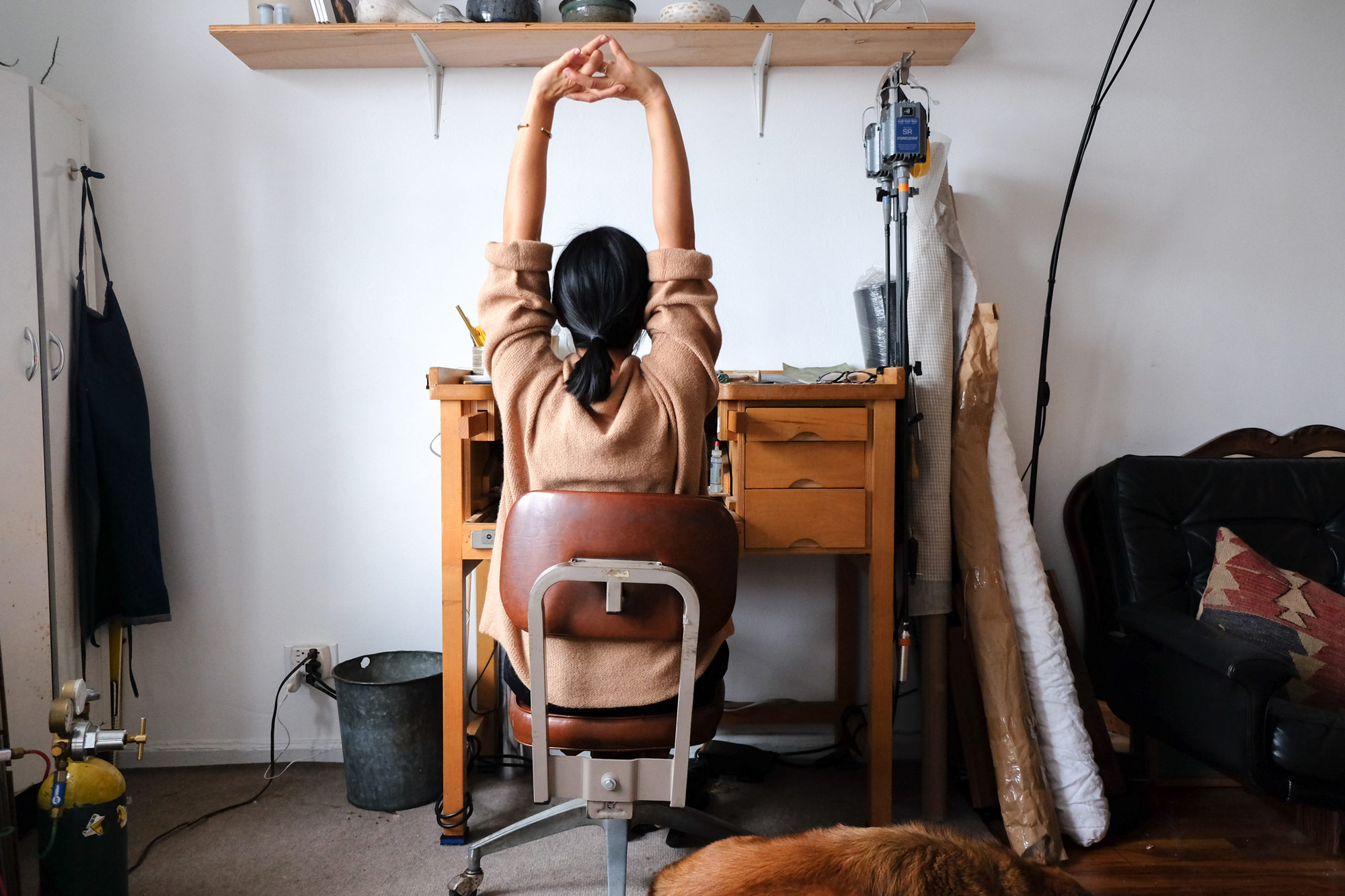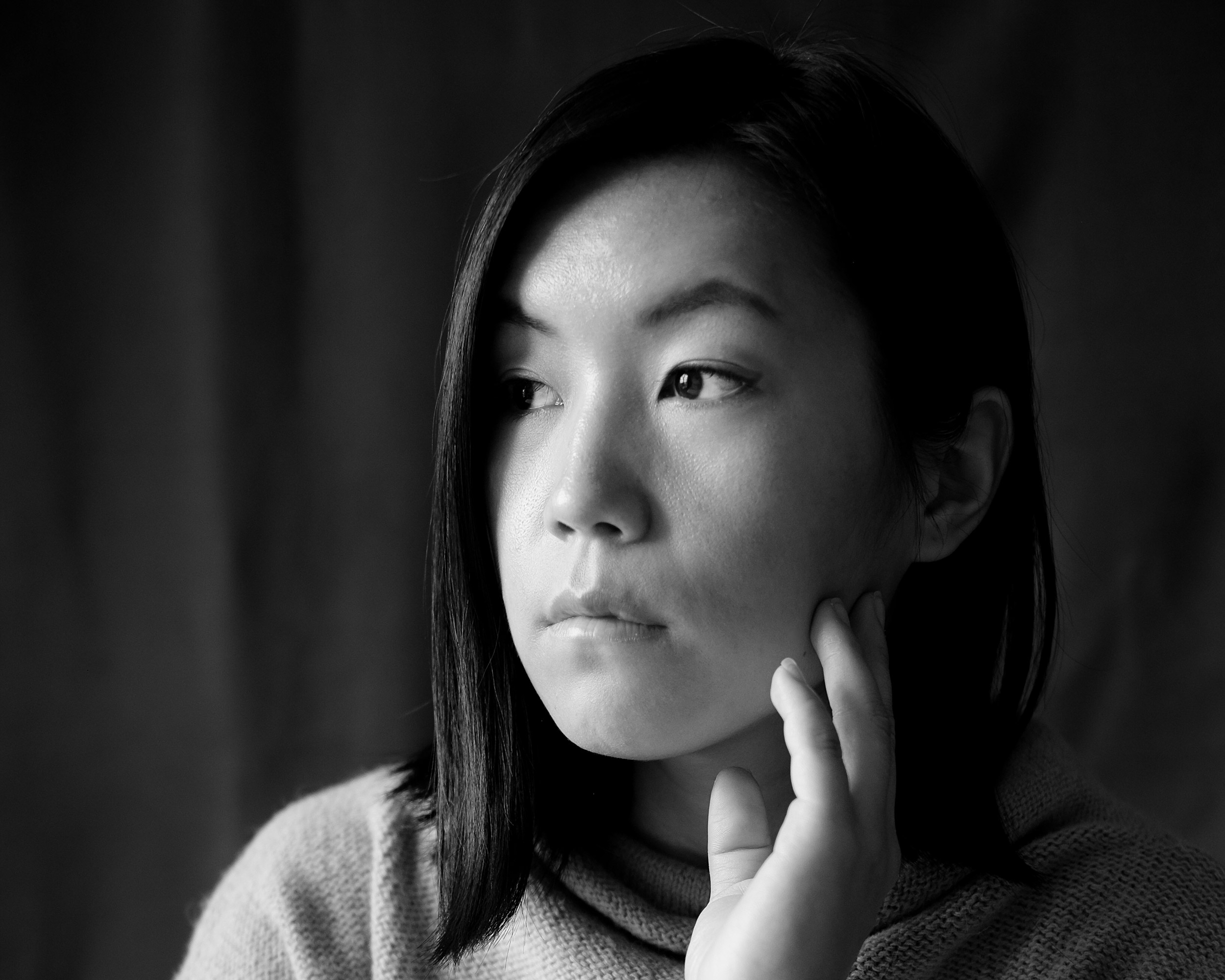
- Interview by Tina Essmaker December 8, 2015
- Photo by Niki Csányi
Kay Wang
- entrepreneur
- jewelry designer
Brooklyn-based jewelry designer, Kay Wang, brings a unique outsider’s perspective to her work with an intense scrutiny on craftsmanship. After working as a marketing executive for nine years, she founded the architectural jewelry line, The Things We Keep (TTWK), in 2011. The line is based on the idea that of all the things we accumulate in our lifetime, the things that stay with us are the things most dear to us. Kay’s work is designed and fabricated by hand in New York City.
Tell me about your path into jewelry design. I’ve done fabrication and wax carving since 2010, and the company has existed since 2012, but I haven’t always done this—and I did not go to art school.
I actually went to school in Washington state where I studied business administration. I worked in marketing and advertising for nine years before I got to a point where I became disenchanted with what I did. The people I worked with were very different from me, and there weren’t many folks I related to. It was an analytically-driven, quantitative job including lots of data analysis and sitting at a computer. There wasn’t anything tangible for me to show, and it wasn’t easy to explain what I did to someone who didn’t work in the industry. That career path started in Washington, continued in LA, and lasted through the first six months that I lived in New York. All told, that chapter spanned three states and several companies.
Marketing and jewelry design are very different fields. How did you become involved in the latter? I started in jewelry very casually. I took a class as an extension of Los Angeles Community College. My professor was a silversmith by trade and had worked for Tiffany’s in New York way back in the day. He had lived in LA for a decade by the time I took his class. That class was my first taste of silversmithing, and I really enjoyed it.
So you hadn’t done any jewelry-making prior? I had worked with beads. LA has a big jewelry district, so there’s a ton of beading supply stores. Beading is very experimental and straightforward, but joining elements together is what’s called a cold connection since there’s no heat involved. You might use pliers, jump rings, and wire, but for the most part, it’s easy and fun to figure out through trial and error. Silversmithing is a different beast and requires a different set of skills and eyes.
Meanwhile, I was already thinking about how to get back to the East Coast since I originally grew up in New York. My boyfriend and I waited it out until a job offer came in from New York. We moved and about six months later the company I worked for ran out of capital and closed their satellite office. Around that time, I found a studio that offered jewelry-making classes, so when my office closed, I took a cue from life as it was then and ran with it. I had a bit stowed in savings, so I started slow, making things to figure out my process, style, and aesthetic. The company became official in 2011, but really gained steam after the first year.
I’m curious about your initial career choice to go into business. Was creativity part of your childhood, or was it something you connected with later on? I grew up in a very traditional Chinese household, which has a lot of stereotypes—many of which are true. It was a household that stymied creativity and valued labor, financial success, and prestige. The first dream my parents had for me was to become really good at piano and go to Juilliard, which didn’t happen. (laughing) I hated the piano and everything that went along with it, so that dream quickly dissipated for my parents. Their second dream was for me to become a doctor or lawyer. None of those happened either.
I always did creative things, but it was never a focus, and our family didn’t foster creativity like I think a lot of families do nowadays.
You mentioned that you grew up in New York, but then moved to Washington state. What led to that move? I moved there with family. We lived in Flushing and then moved to Jamaica, which was the turning point for us. It wasn’t the nicest neighborhood back then. At one point, my mom was home alone and witnessed a burglary at the house across the street. A month after that, our house was burglarized. My parents decided to move and they chose Washington because they had friends near Seattle.
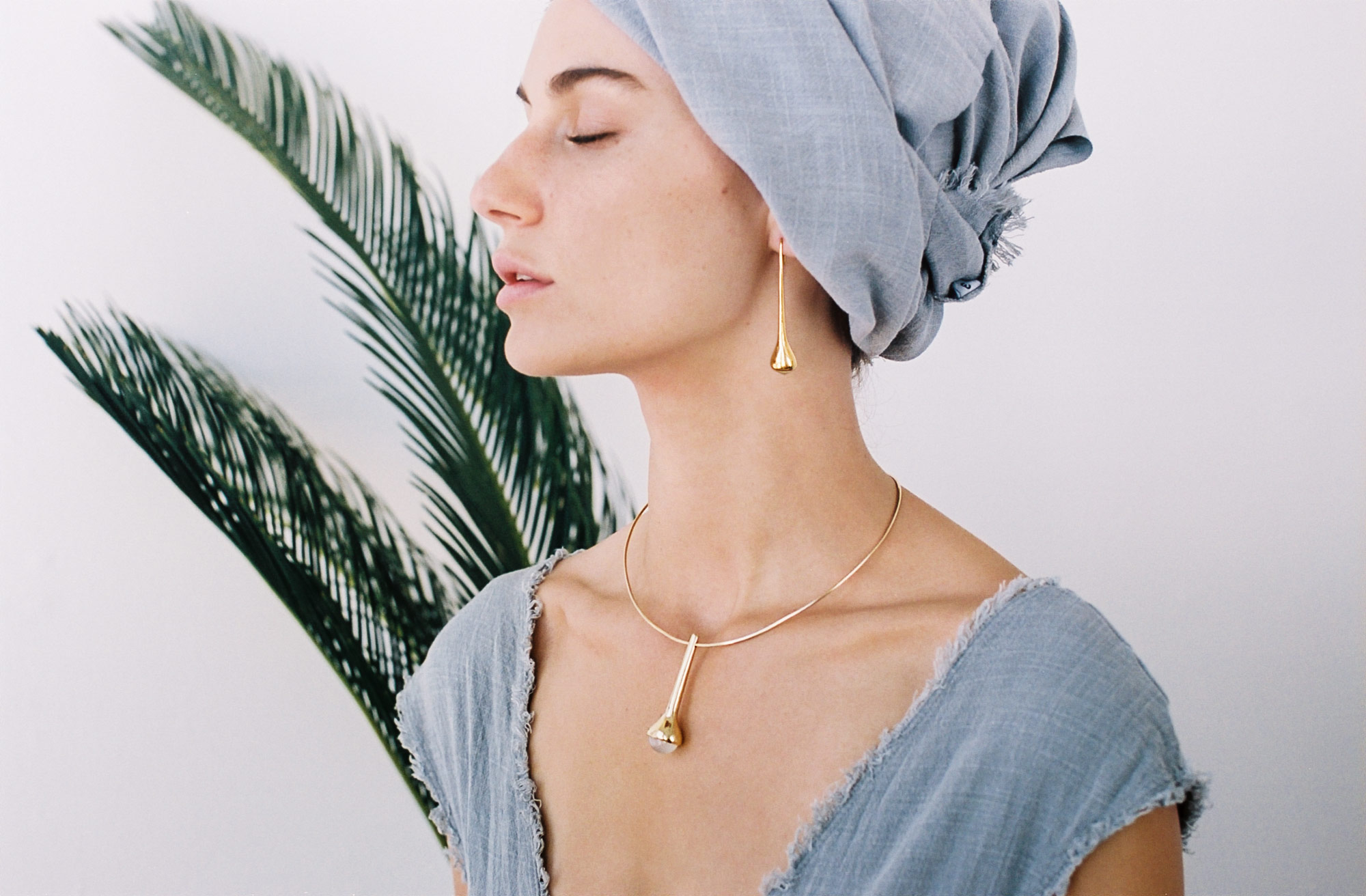
“I’ve done fabrication and wax carving since 2010, and the company has existed since 2012, but I haven’t always done this…I worked in marketing and advertising for nine years before I got to a point where I became disenchanted with what I did.“
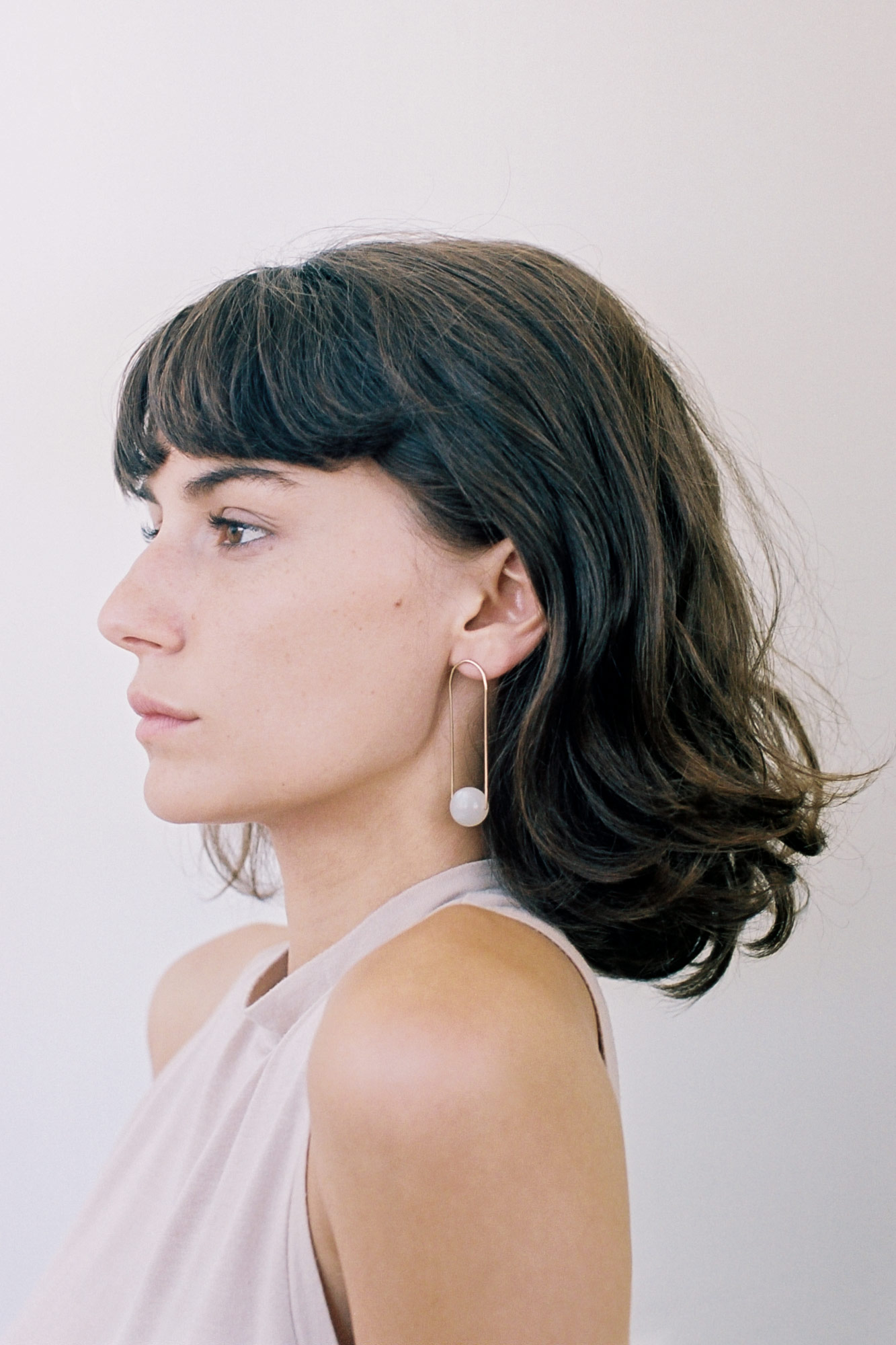
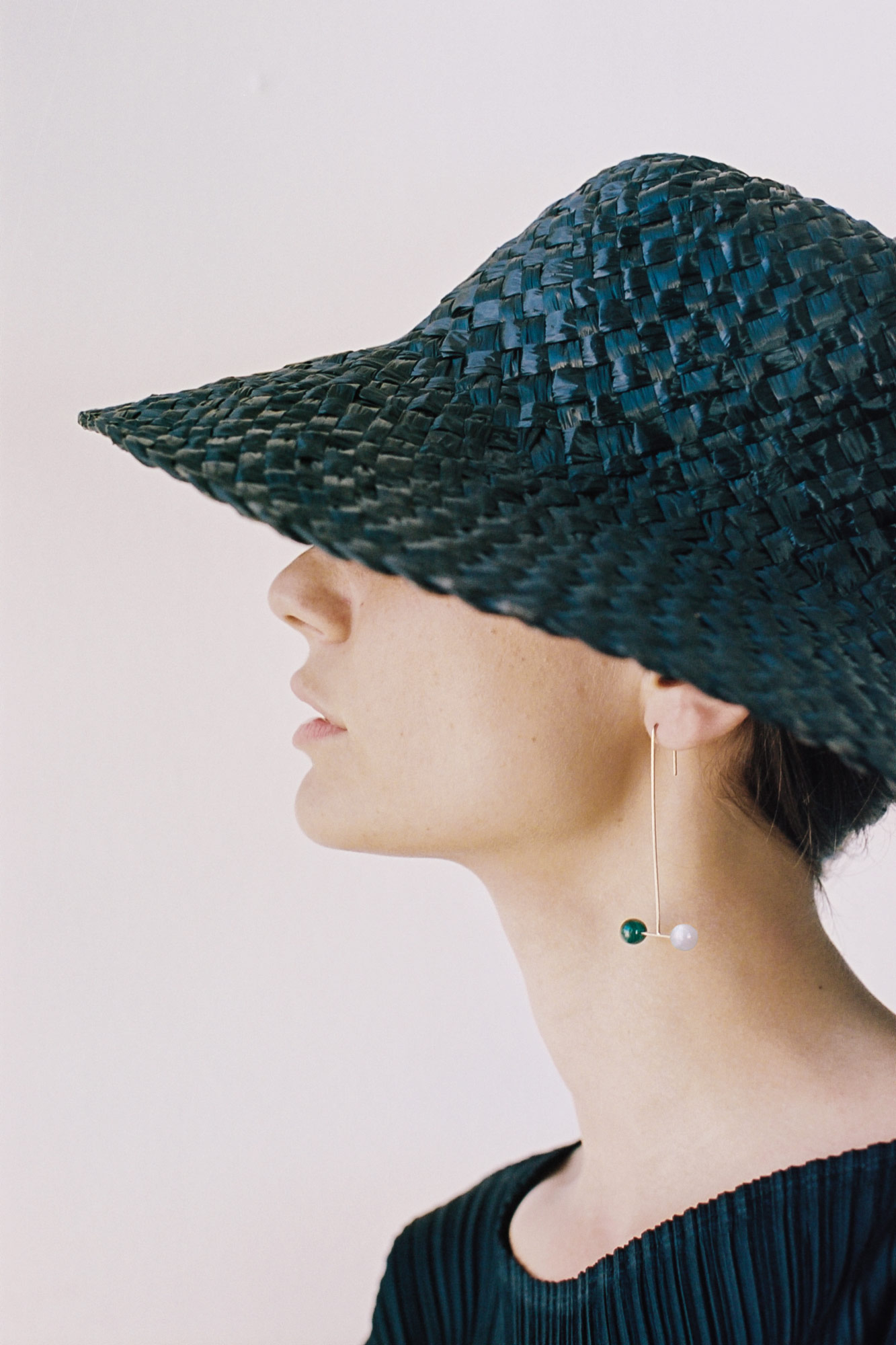
You finished high school in Washington state and went to college there before relocating to LA. Why LA? I wanted to get out of Washington. Seattle is really, really small. There’s a separation of three to four people and they pride themselves on being a “little big city.” At that point, I’d lived there for 11 years, so I was ready to get out and go.
After living and working in LA, you moved back to the East Coast where you were almost immediately laid off. Was that an “Aha!” moment for you? Maybe a sign from the universe to give jewelry design a shot? I think it was more of a passive move on my part. I knew the company I worked for was in dire straits, and I was waiting for them to close the office. There were rumors that it was going to happen way before it actually did. Basically, my boss had already told me I should look for another job months before it happened. I was so tired of working in that field that the prospect of trying to find another job doing that same thing was vastly unappealing to me.
At the same time, I was already taking classes for jewelry, and there was a big boom of trade shows and a real creative stir in Brooklyn in general. I thought, “Well, shit, if other people can do this, then I don’t see why I can’t?” I enjoyed it, so I figured I’d go for it. Looking back, I think a lot of young designers’ successes are due to a level of naiveté. They just go for it.
Were you scared? I mean, I grew up in the Midwest where it’s very blue-collar and people often struggle financially. You think about money, and you don’t want to struggle. Did that cross your mind? I was scared, but I actively buried my head in the sand and tried not to think about it. I did have a good amount of savings and knew that if I managed my money well, I wouldn’t have to ask anyone for money or find someone to back my idea. I think that suited me well because I had a slow go at the start. I didn’t pour a ton of money into it hoping it would pan out. I decided to work on it slowly over time and see how it went. It kept paying for itself, so it grew pretty organically.
What did that timeline look like from you being laid off to having a self-sustaining business? The first year I created styles and products, but not on a regimented schedule. I was figuring out my process and aesthetic. After that, I did my first capsule show. At that point, I was entrenched in it and knew I needed to make it work. I already had a few local accounts and I picked up a few more after my first show. I also blindly emailed people and begged friends for introductions. That helped. There are six months in between trade shows, and they go by so fast. Every six months, my work progressed and I got more accounts. Three trade shows ago, I picked up a few large national accounts, which are great for getting your work out there.
Over the last two years, I started making a big push for sales. I still do everything myself, which is hard. Distribution is up to me, and there are over 60 accounts domestically and internationally. Overall it’s doing really well. The company is ROI positive, which is amazing at the end of year two. Now the challenge is to continue to grow and not do everything myself.
Have you had any mentors? Outside of the classes I took, no. Not really. I’m a big fan of trial and error, especially when it comes to tangible items. I’ve done ceramics and talked to a lot of people who make tangible items. I think a lot of it comes from doing it, screwing up, developing muscle memory, and learning over time. You have to find what works for you.
In terms of building a brand and growing a business, my small network of friends really helped in the beginning. One of my good friends, Ilana Kohn, makes clothing, and she was instrumental in egging me on. She’d say, “This is what I’m doing. You should try it, too.” I didn’t know any better, so I tried. Her line is doing great now. She was a good personal and business mentor because we figured it out together and bounced ideas off of each other. And she got started before I did, so she shared a lot of knowledge.
The more you talk to people, the more you realize that most people are figuring it out as they go and learning along the way— Or they have the same exact problem as you do, and they’re open to ideas about how to solve it.
I agree. As an independent publisher, I love talking to fellow publishers about similar challenges. That dialogue is helpful. Yes, and I also think about how we share information. One of the things I thank Ilana for is that she was not hesitant to share information with me. Now I think people are generally more inclined to keep things closer to the chest. I get it, but it’s the same idea behind creating a union. It creates ideals and ways to work together that make things better for everyone’s business. Plus if people aren’t taking their work seriously, they will eventually fall by the wayside anyway.
Yes, if someone isn’t going to apply it, then it won’t benefit them. And if they are willing to work hard and apply it—and it will take a lot of work!—then good for them. Yeah, and this community is so small. If you share something with someone, they’ll remember what you did for them and help you out later. Because the community is so small, if people don’t help you out in return, it could bite them in the ass, too. Everyone here is two degrees of separation. If you share your knowledge, it’s up to them to apply it—half of the time they won’t. There’s no harm in trying to help.
In a similar vein, do you feel a responsibility to contribute to something bigger than yourself? As a whole, yes. The name of the line, The Things We Keep, is longer, but it construes the idea that we don’t want to take in more than what is necessary. There’s a movement of being more conscientious about what we try to fold into our lives—I feel like my line fits in with that.
I’m in my early thirties and the majority of my friends are, too. Most of us are more or less my age and are currently in the process of trying to get rid of things—and not just physical things, but things that are mentally taxing, like relationships that are emotionally toxic. We’re cutting things out, but really relishing what makes the cut.
The common thread among independent designers who focus on sustainability is keeping what matters to you the most. It’s about keeping things sustainable so that we have something to give to our kids in the future. It’s about making articles of clothing that are high-quality so they will last instead of going into a landfill at the end of the year. What I do definitely fits within the larger scope of that.
I like the name of your line. The Things We Keep gives an instant picture of your ethos. It might be part of living in New York and having limited space, but I go through my closet every season and try to pare down my wardrobe. The more I have, the more I have to manage. And the more you have, the less it means to you.
“The common thread among independent designers who focus on sustainability is keeping what matters to you the most. It’s about keeping things sustainable so that we have something to give to our kids in the future.”
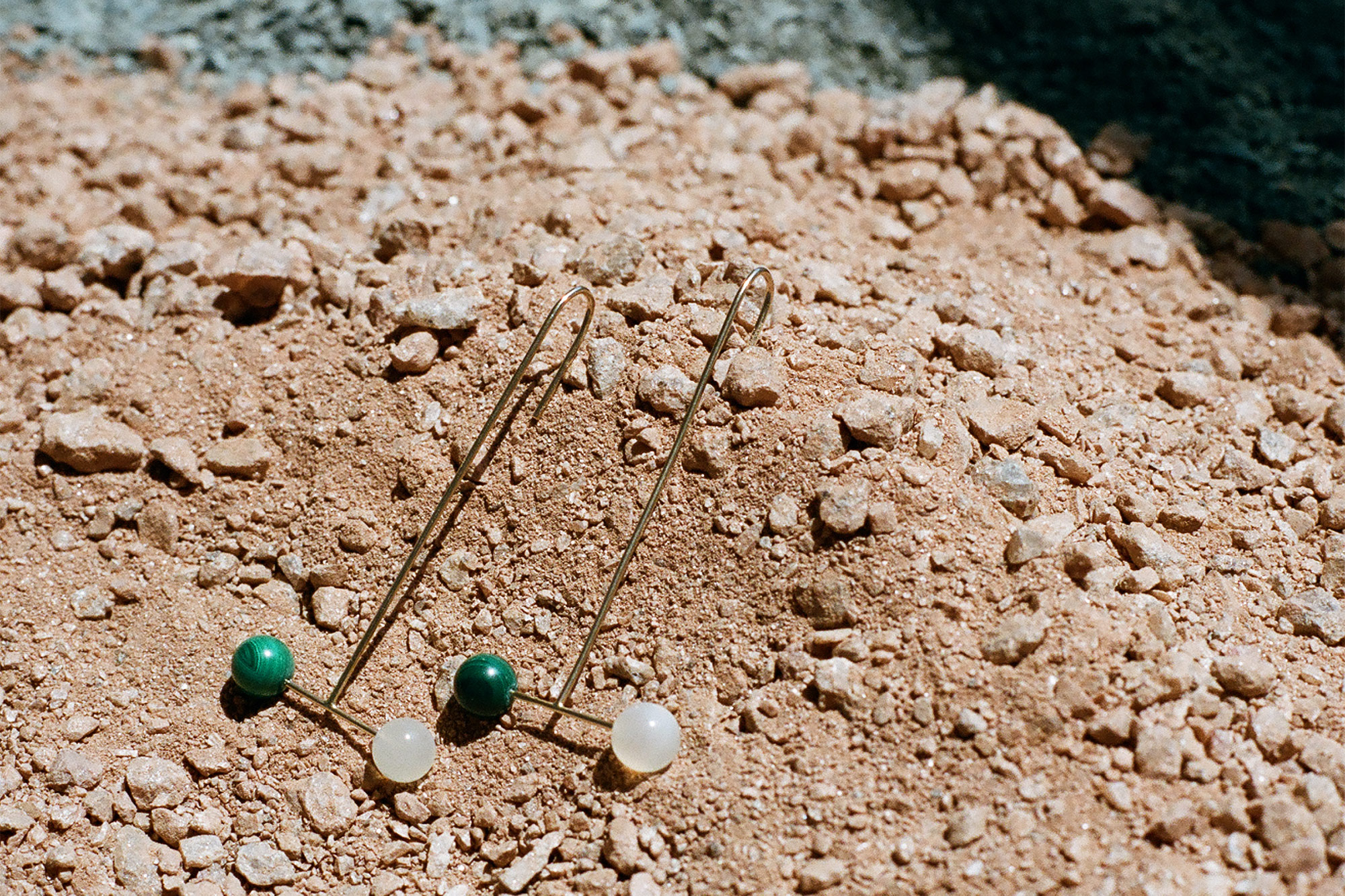
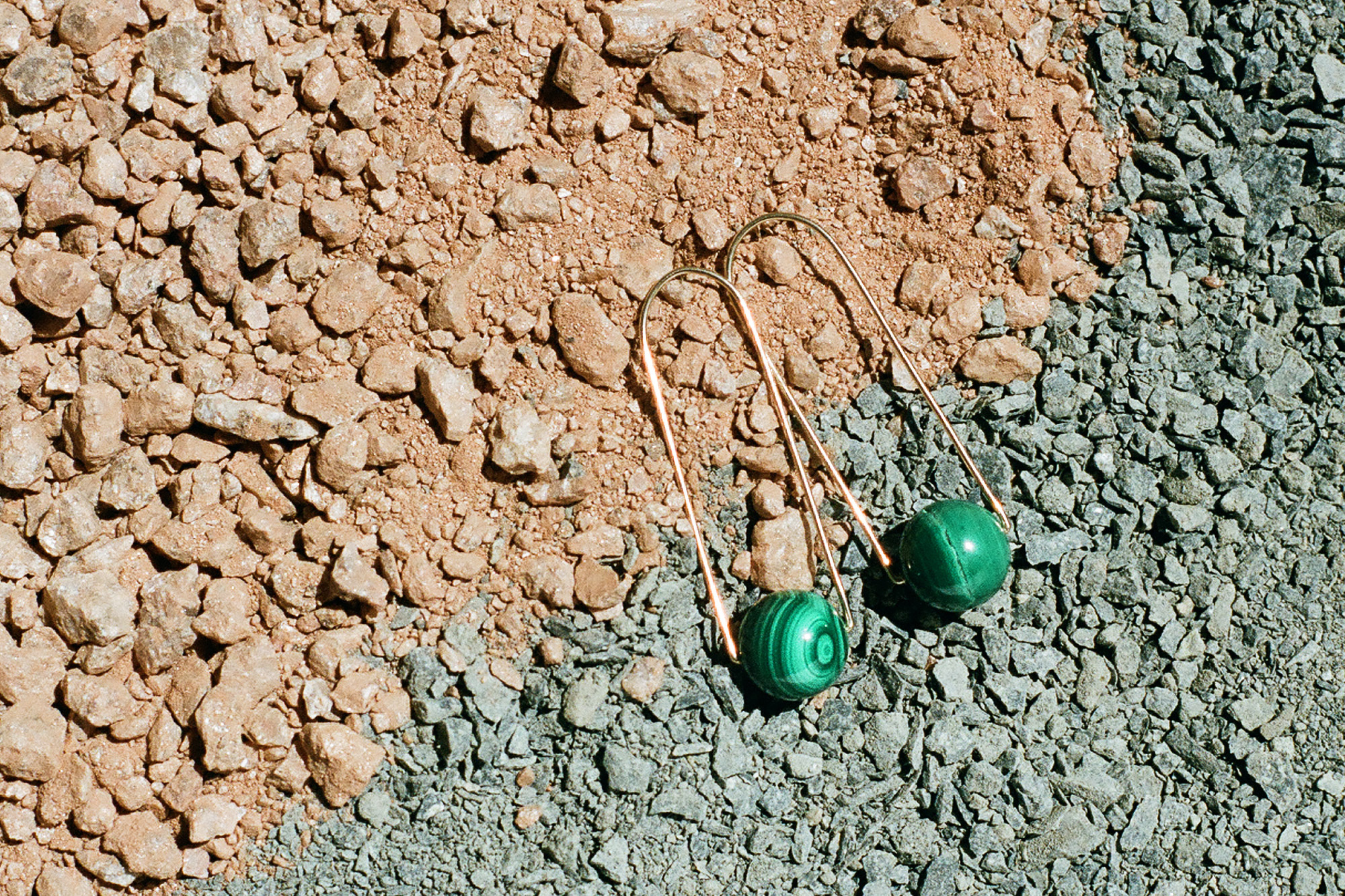
Yes, for sure. Now that you’re working for yourself, are you more creatively satisfied? Working for myself is very challenging. Doing what I enjoy, however, is an altogether different story. I am much happier now. The fact that I can produce a solid, tangible item to show has such an element of pride to it. There’s something about presenting a physical item for people to hold, turn over, and visually dissect. That carries a big creative reward.
Yes, I’m being creative, but I’m also running a business. I’m able to bridge this gap that I think a lot of designers don’t. Some people are good at making, some are good at designing, and some are good at sales. It’s nice to touch all of those worlds right now. Creatively and professionally, I am in a spot where I feel much stronger as an individual and have a much better sense of self than I ever had before. I was a cog in the wheel before. I spun and others spun around me. Now, I am the machine.
In my experience, you work much harder when you’re self-employed, but it’s rewarding because everything you’re investing goes into your own thing. You get to watch it grow. In a weird way, it’s like living by yourself. When you have a roommate and there are dirty dishes in the sink, you’re like, “Who dirtied that bowl?” When you live by yourself and everything is a mess, at least it’s your own mess and you know how it happened. There’s a lot of accountability that happens in running a business by yourself.
What are your hopes for the coming years? A business plan is in the works. The short-term goal for the next two years is to find vendors or teams that can take on certain aspects of the business as I move more toward design versus production. That way I can grow different facets of the line. I will continue making jewelry and grow our home line to include more soft goods. I also want to increase distribution. It’d be nice to bring on other brands at some point. I’m not sure if a store is the way to go, but I’d love to work with brands that share a similar mission in a way that is mutually beneficial.
What does a typical day look like? You have a working studio in your apartment, so do you get up and get right to work? Actually, kind of. I’m not a middle-of-the-day person. I’m a morning and/or evening person. I get up, answer emails, and make sure that orders are on schedule. At that point, I start working on design for a few hours. Then I’ll make lunch or go for a walk. I start working again in the late afternoon and will work through until 9pm or 10pm. I do run all of my own errands right now, too, so that takes a considerable amount of time.
Do you design and produce everything right now? There are certain phases or stages of production I don’t do. I don’t cast pieces. The process of going from a wax piece of jewelry to a metal piece is the casting process. I don’t do it because it requires specific tools and is a very specialized skill set. There are a lot of casting houses in the city and most of the people here who make jewelry use them because there isn’t enough space to do it yourself.
We’ve talked a lot about community already. Is it important to you to be part of a creative community of people? I think so. I say that with hesitation. It’s important to me to be part of a creativity community to get feedback and know that I’m not alone in what I go through. We all go through similar trials and tribulations.
That said, I also value working in a silo. Part of that is because we live in a world where we are bombarded with visuals and social media. It’s easy to become influenced by and draw inspiration from the same places. I think that’s dangerous because there’s a groupthink that inadvertently starts to happen. Working in a silo can be helpful in creating a clean palette to draw from.
One of the things I really love to do is tour artists’ homes. I recently went to Russel Wright’s home in Garrison, NY. He was known for a line of ceramics and was also a furniture designer for Macy’s. I’m realizing that a lot of these artists who were making weird and wacky items worked in a vacuum. They didn’t adhere to public opinion. They forged ahead on their own without recognizing or hearing others’ critiques. Instead, they led the way. That is why their designs have longevity.
When you work alone and are a bit isolated, you naively say, “I wanna do this,” without reverence for anyone else’s opinion. I think that has value. If you bounce every idea off of everyone you meet, then nothing will get done because everyone has a different opinion.
Speaking of influence, do you think that living in New York has an effect your work? I think it does in terms of pace. Everyone is moving a million miles an hour. That helps creatively because you either do something good, which stirs a movement, or someone else does something good, which causes you to think about your pace. It drives you. No matter what you do, there is always someone out there who does it better, but that’s a great push. It pushes you to challenge yourself and to do things that you don’t think you can do. I didn’t get that in Seattle or LA.
You’ve worked in different fields and lived in a variety of cities. Drawing from those experiences, what advice do you have for those starting out? Don’t let others tell you what you can and can’t do. It requires a certain level of bullheadedness or stubbornness or naiveté, but if you really want to do something, then go for it. If you don’t know how to do it, figure it out.
Going back to your own experience at age 18 when you were deciding on college and your career focus, would you give yourself that same advice? Honestly, no. I feel like I was able to get the most out of my previous career because of that mantra. If someone tells me I can’t do something, I say, “Yes, I can.” I was always that person, and I know that can be annoying, but I think I’m better because of it. If anything, it at least leave me with a new skill or knowledge. Despite critics, you have to do it because you want to.
Looking into the future, have you thought about the kind of legacy you’d like to leave, personally or professionally? I can’t remember the exact wording or who said it, but there’s a quote along the lines of: “Everyone dies a second death. The first is physically, and the second is when the last person who remembers you dies.” Personally, I hope that never happens. I’m reaching an age now where, as we talked about earlier, I’m getting rid of toxic relationships, but cultivating the ones I really enjoy. I want to have people in my life who are good people. I want them to enrich my life, and I want to enrich theirs in return. Personally, that’s the legacy I want to leave: finding a good group of friends I value and keeping them around for as long as I can.
Professionally, it would be awesome if my designs were heralded as unique because they hadn’t been done before or because they were done differently. I hope that my creative sensibilities are such that they stand the test of time. True to the name of the brand, it would be awesome if pieces were handed down to children or passed on to friends.
“Don’t let others tell you what you can and can’t do. It requires a certain level of bullheadedness or stubbornness or naiveté, but if you really want to do something, then go for it.”
